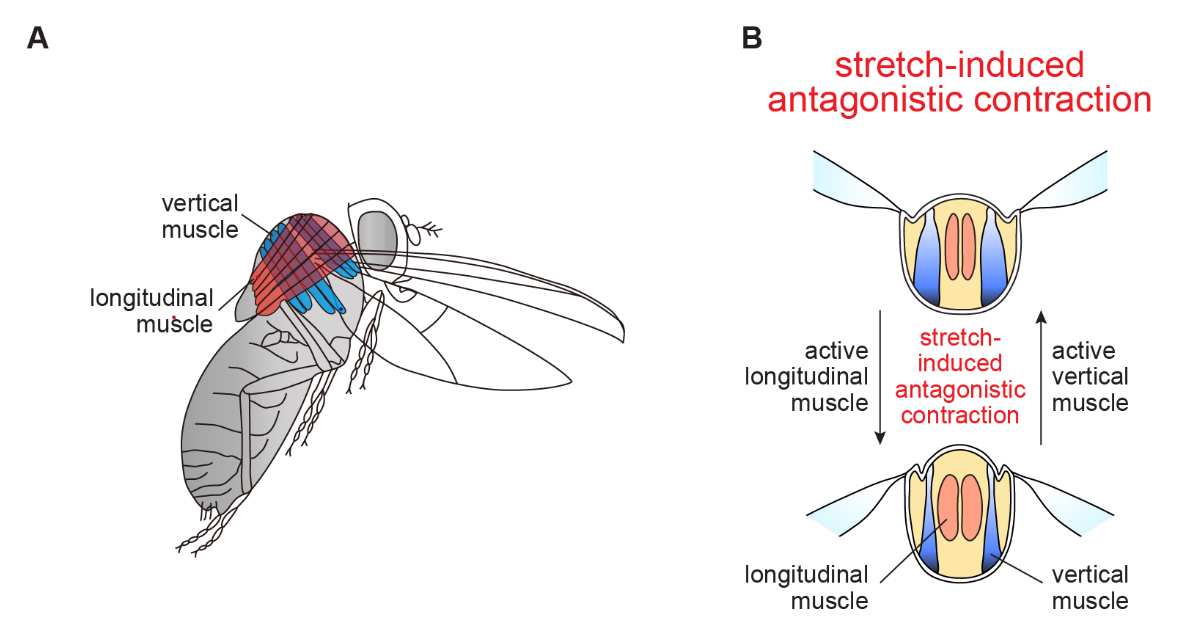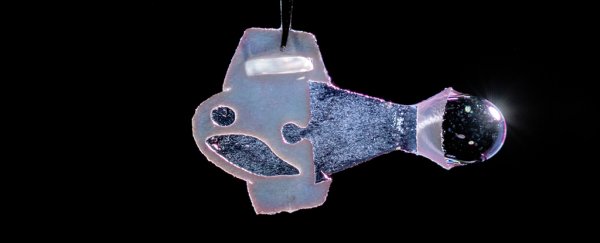With its tail flipping rhythmically from side to side, this strange synthetic fish scoots around in its salt and glucose solution, using the same power as our beating hearts.
This nifty miniaturized circulatory system, developed by scientists at Harvard and Emory universities, can keep swimming to the beat for more than 100 days.
The inventors have high hopes for the strange little device, composed of living heart muscle cells (cardiomyocytes) grown from human stem cells.

The creation of the 'biohybrid' fish focuses on two key regulatory features of our hearts: their ability to function spontaneously, without need for conscious input (automaticity); and messaging initiated by mechanical motion (mechanoelectrical signaling).
This insights learned from the research will hopefully allow researchers to more closely examine these aspects in heart diseases.
"Our ultimate goal is to build an artificial heart to replace a malformed heart in a child," says Harvard University bioengineer Kevin Kit Parker.
While it's straightforward enough to create something that may look like a heart, making something that actually functions like one is a much harder challenge. The wriggling fishbot is a big step towards this, building on previous work using rat heart muscles to build a jellyfish biohybrid pump and a cyborg stingray.
"I could build a model heart out of Play-Doh, it doesn't mean I can build a heart," explains Parker.
"You can grow some random tumor cells in a dish until they curdle into a throbbing lump and call it a cardiac organoid. Neither of those efforts is going to, by design, recapitulate the physics of a system that beats over a billion times during your lifetime while simultaneously rebuilding its cells on the fly.
"That is the challenge. That is where we go to work."
With two layers of cardiomyocytes on each side of the tail fin, the biohybrid fish is built to be autonomous – it can self-perpetuate its own movement.
When one side squeezes tight, the other side is stretched, triggering a feedback mechanism that causes the stretched side to contract and then trigger the same mechanism on the other side in an ongoing cycle.
This system of asynchronous muscle contractions is based on insect flight muscles.
 Each contraction automatically triggers the other muscle pair to contract. (Lee et al., Science, 2022)
Each contraction automatically triggers the other muscle pair to contract. (Lee et al., Science, 2022)
The physical bending is the mechanical motion that activates the electrical signal forming ion channels in the muscles. These ion channels trigger the muscles to activate and contract.
Exposing the system to streptomycin and gadolinium – known to disrupt ion channels in muscles – ended up decreasing swimming speeds and breaking the relationship between the mechanical stretching and triggering of the next contraction on the other side. This confirmed the ion channels were indeed involved with the rhythmic contractions.
"By leveraging cardiac mechano-electrical signaling between two layers of muscle, we recreated the cycle where each contraction results automatically as a response to the stretching on the opposite side," says Harvard University bioengineer Keel Yong Lee.
"The results highlight the role of feedback mechanisms in muscular pumps such as the heart."
Parker and colleagues also integrated a pacemaker-like system into the biohybrid: an isolated cluster of cells that control the frequency and coordination of these movements.
"Because of the two internal pacing mechanisms, our fish can live longer, move faster, and swim more efficiently than previous work," explains biophysics researcher Sung-Jin Park, the co-first author of the study.
The tissue wide contractions of the biohybrid fish are comparable to the zebrafish that the biohybrid is modeled after – more efficiently propelling the little device around than mechanical robotic systems.
"Rather than using heart imaging as a blueprint, we are identifying the key biophysical principles that make the heart work, using them as design criteria, and replicating them in a system, a living, swimming fish, where it is much easier to see if we are successful," says Parker.
This research was published in Science.
